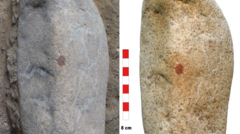New research uncovers the long historical relationship between bedbugs and humans, beginning with their ancestral feeding on early humans around 245,000 years ago, leading to their establishment as persistent urban pests.
Bedbugs' Long-Lasting Urban Relationship with Humans Unveiled

Bedbugs' Long-Lasting Urban Relationship with Humans Unveiled
A fascinating study reveals that bedbugs have been thriving on human hosts for over 245,000 years, marking them as some of the earliest urban pests.
A remarkable study highlights the enduring connection between humans and bedbugs, revealing that these creatures have been feasting on human blood for roughly 245,000 years. Following their descent from cave-dwelling bats, bedbugs made a pivotal shift in their diet when they began to consume the blood of early humans, including Neanderthals. This critical change marked the emergence of a new bedbug species that became wholly reliant on humans for sustenance.
Warren Booth, an urban entomology professor at Virginia Tech and lead author of the study published in Biology Letters, notes that bedbugs are not typically found in gardens, signifying their complete dependence on human presence for survival. Following a decline during humanity’s nomadic phase, the population of human-feeding bedbugs began to boom approximately 13,000 years ago, coinciding with the establishment of permanent human settlements.
Throughout this extensive relationship, bedbugs have managed to adapt and thrive in urban environments, making them a notable component of human habitation despite their reputation as an undesirable pest.






















